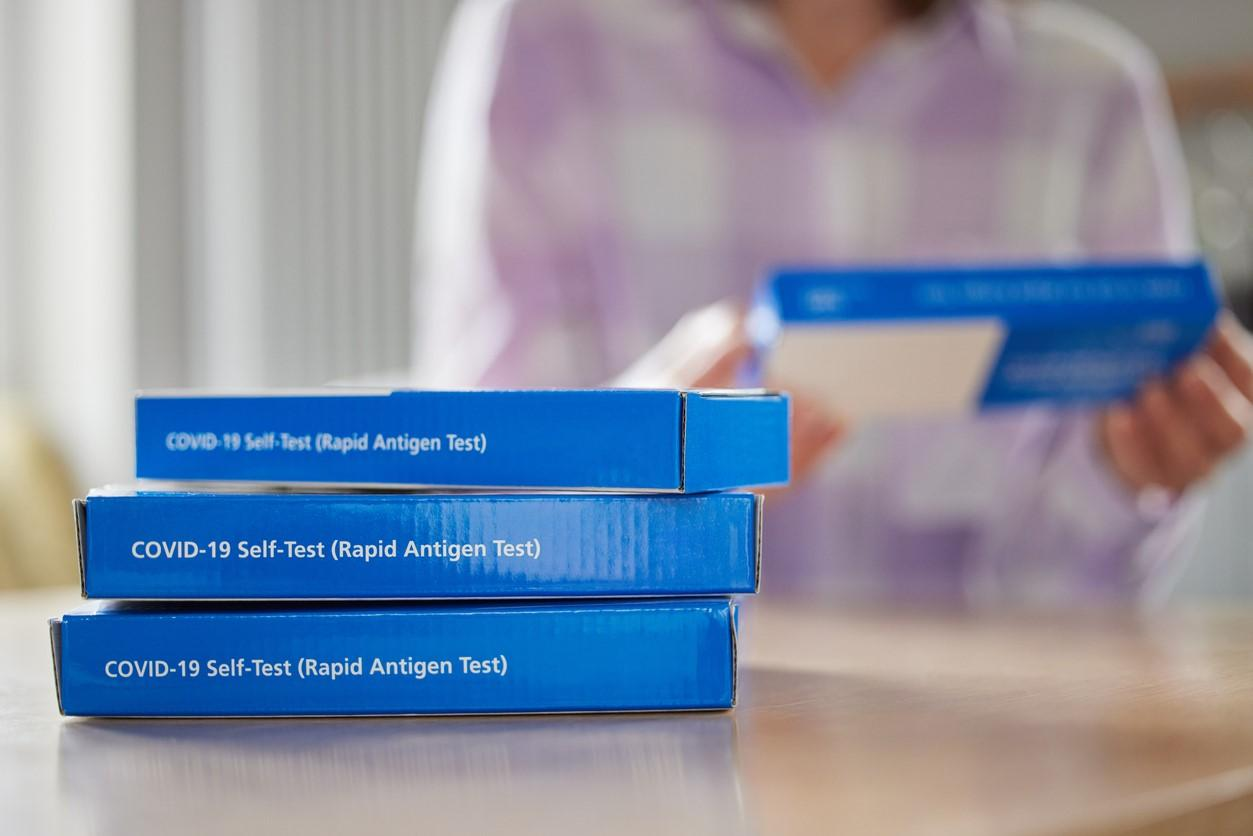Study findings that reveal a sensitivity of 47% for COVID-19 rapid antigen tests (RATs) compared with reverse-transcription polymerase chain reaction (RT-PCR) tests during Omicron variant predominance should prompt clinicians to consider using the latter test in high-risk patients eligible for antiviral drugs, the authors say.
The study, published in Morbidity and Mortality Weekly Report, also showed a RAT sensitivity of 80% compared with viral culture.
93% reported symptoms
From November 2022 to May 2023, a team led by researchers from the US Centers for Disease Control and Prevention (CDC) and Vanderbilt University compared the results of SARS-CoV-2 RATs and same-day RT-PCR and viral culture among participants in a household virus-transmission study enrolled within 7 days of symptom onset. Participants completed daily symptom diaries and collected two nasal swabs for 10 days and reported RAT results.
Among 354 participants with 2,244 RAT results in 129 households, 67% tested positive for COVID-19 and were included in the study. For infected participants, the researchers calculated the proportions of positive RAT, RT-PCR, and culture tests daily after symptom onset or, for symptom-free participants, from the date of positive result. Only one commercially available RAT was used.
Participants were aged 2 months to 83 years (median, 36 years), 56% were White, and 59% were female. Forty percent of participants had received a COVID-19 vaccine dose within the last year, and 35% had received at least two doses, with the most recent dose received more than a year before.
In total, 24% were unvaccinated or had received only one dose, and 43% had self-reported or serologic evidence of previous COVID-19 infection. At least one symptom was noted by 93% of participants, including 77% and 66% who reported cough and fever, respectively.
Culture is only method to detect live virus
RATs were initially rolled out in the United States to aid in the diagnosis and treatment of COVID-positive people and help prevent onward transmission when SARS-CoV-2 immunity was low and rates of poor outcomes were high, the authors said.
Also, demands for testing exceeded supply, and long turnaround times for RT-PCR results contributed to ongoing COVID-19 spread, they added.
Studies performed during the pre-Delta and Delta variant surges showed that RATs have high specificity but lower sensitivity than RT-PCR, leading to a high number of missed infections but approximating viral culture, the researchers noted. Culture isn't often used in routine patient care, but it can detect live virus, while RT-PCR can't discern between live virus and viral fragments.
Use rapid tests only after symptom onset
A total of 61% of participants received at least one positive viral culture result, and 69% had one or more positive RATs. The sensitivity of RATs was 47% (95% confidence interval [CI], 44% to 50%) compared with RT-PCR and 80% (95% CI, 76% to 85%) versus viral culture. The proportion of positive RAT (59.0%) and RT-PCR (83.0%) results peaked 3 days after symptom onset, compared with 2 days after onset for viral culture (52%).
The low sensitivity of antigen testing among persons with asymptomatic infections illustrates that these tests should only be used once symptoms are present.
"Although viral culture is not an absolute marker of transmissibility, this pattern suggests that positive antigen test results could indicate transmissible virus; thus, antigen tests might aid persons with COVID-19 in determining when they are no longer infectious once symptoms begin to resolve," the researchers wrote.
Of the 219 participants with symptoms, the highest proportion of COVID-positive RATs was 65% 3 days after onset among those who had any symptom and 80% at 2 days among those who reported fever.
"The low sensitivity of antigen testing among persons with asymptomatic infections illustrates that these tests should only be used once symptoms are present," the researchers wrote. "Conversely, the higher sensitivity when symptoms are present (especially cough or fever) supports the need to stay at home when symptomatic, irrespective of test result."
When stratified by symptoms, RAT sensitivity rose with occurrence of any COVID-19 symptom (56% and 85% vs RT-PCR and culture, respectively) and peaked on days that fever was reported (77% and 94% compared with RT-PCR and culture, respectively). Compared with RT-PCR and culture, RAT sensitivity was low on symptom-free days (18% and 45%, respectively).
"Clinicians should be aware of the lower sensitivity of antigen testing compared with RT-PCR, which might lead to false-negative results," the authors wrote. "This finding has implications for timely initiation of SARS-CoV-2 antiviral treatment, when early diagnosis is essential; clinicians should consider RT-PCR for persons for whom antiviral treatment is recommended.
"Alternatively, if RT-PCR tests are not available or accessible, clinicians and patients should follow FDA's [Food and Drug Administration's] serial antigen testing recommendations to help optimize diagnostic test performance," they added.





















